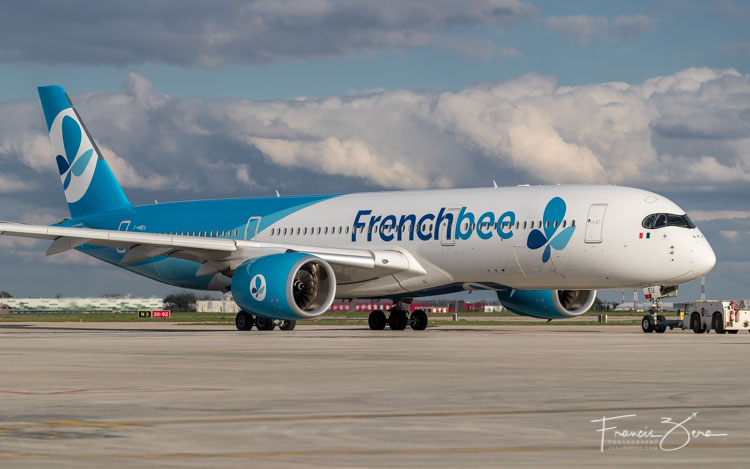
A French Bee A359 on the taxiway at Orly Airport in Paris. It’s a very lovely livery, IMHO.
Can you have low-cost airfare and elegant service? French Bee definitely wants you to think so.
French Bee is a relatively new low-cost carrier, having begun operations in September of 2016. They’re based at Paris Orly Airport (ORY).
With a current fleet of three Airbus aircraft (one A330-300 and two A350-900s) flying to five destinations, they’re a relatively small player, and they’re France’s first LCC. They also have one A350-1000 on order, currently slated for delivery later this year.
From their ORY hub, they fly to San Francisco, Punta Cana in the Dominican Republic, Papeete, Tahiti, and Saint Denis, Reunion, all of which are vacation destinations for French travelers.
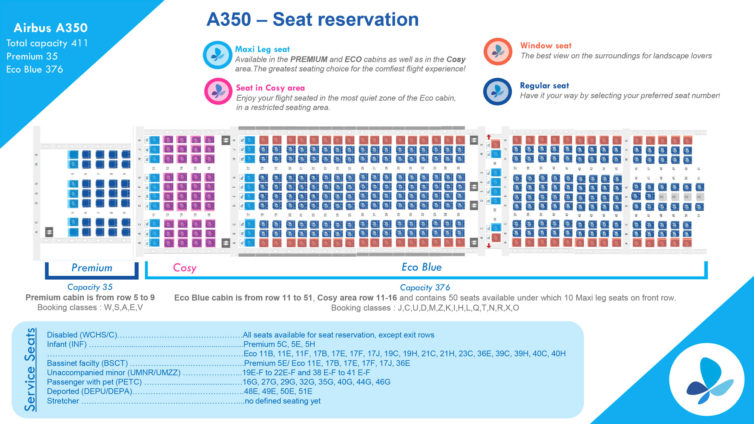
French Bee’s A350-900 seat map
French Bee is part of the Dubreuil group, which also owns Air Caraîbes, a somewhat larger airline which primarily serves Caribbean holiday destinations from the same ORY base.
Interestingly, French Bee started out being named French Blue. When the airline applied for a U.S. air carrier permit in November 2017, JetBlue objected to the idea of allowing another airline to operate in the United States that had the word “blue” in its name. That eventually led to a rebrand as French Bee in January 2018.
With a target audience of budget-minded holidaymakers, the airline’s pricing is very competitive; fares typically run less than $700 return between SFO and ORY. An additional $250-ish buys you a premium-class seat (more on that later).
There are 411 seats on a French Bee A359: 35 Premium, 50 Cosy, and 326 in Eco Blue.
I flew with French Bee on their SFO-ORY-SFO route the first week of April, traveling in 10-abreast Smart Economy/Eco Blue on the outbound leg and in their Premium cabin on the return flight.
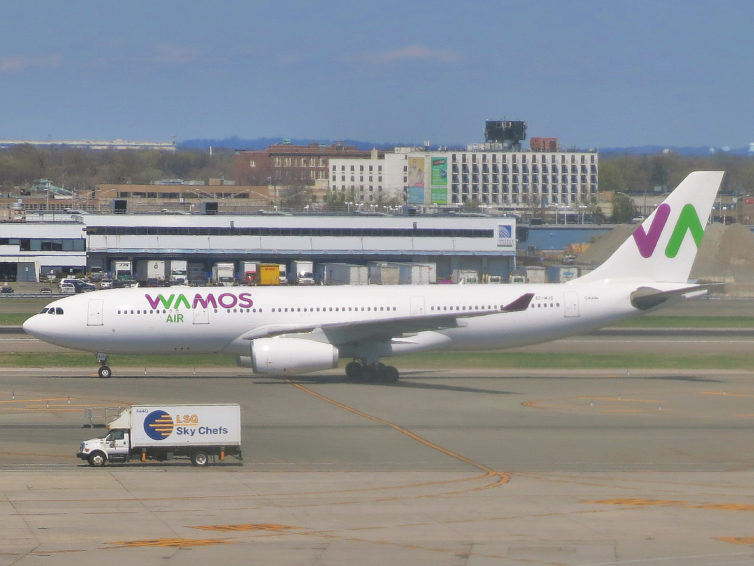
Wamos Air A330-200 at JFK – Photo: Creative Commons | Adam Moreira (AEMoreira042281)
Last year, I wrote about my experience flying with Norwegian Air on the 787-9 Dreamliner from London Gatwick (LGW) nonstop to Denver (DEN). On that flight, we were in their “Premium” cabin, but I peeked back at economy and thought it looked pretty good. It had a standard 3-3-3 Dreamliner configuration, reasonable pitch, and AVOD screens at each seat. The crew was friendly as well.
This year, my family was heading to Paris for the new year, and I had booked our outbound flight with miles (my kids were very excited to be flying business class for the first time, and on the upper deck of a Lufthansa 747-400, to boot!) Given that I needed a one-way flight back from Europe (which are usually obscenely priced on legacy carriers), I figured we’d fly Norwegian again, this time in economy. Norwegian prices their fare based upon the one-way journey, which is what you’re used to for U.S. domestic flights. For a very reasonable $511 each, we were booked nonstop from LGW to DEN. Our fare included advanced seat assignments, checked and carry-on baggage, and meals. Everything was going to be just fine. Then I got this text.
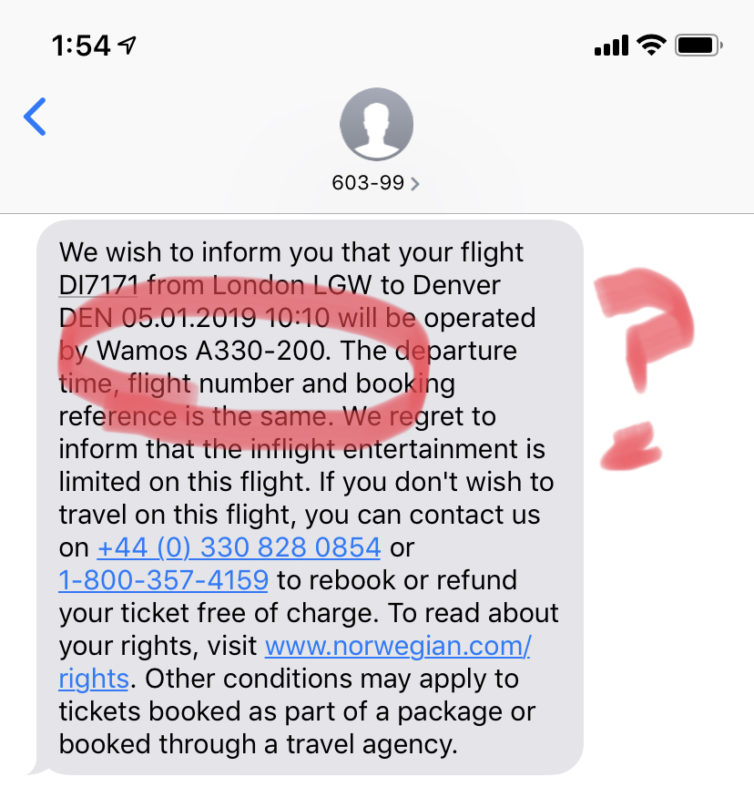
One cubic foot. That’s roughly how much volume airlines grant you for the 9 inch x 10 inch x 17 inch “personal item” that goes under your seat. It’s a tiny allowance. Sure, you have a bit more space in your bag stored in the overhead bin. But nowadays many airlines are charging you for overhead bin access (THANKS, basic economy). Even if they don’t, nobody wants to be that guy who gets up every hour to get things from the overhead bin — especially if you’re sitting in the window seat.
So if you fly frequently, you put a lot of thought into what goes into your under-the-seat-in-front-of-you storage. The contents of your inflight go-bag are probably a good window into your personality and priorities when it comes to flying. In the spirit of sharing, I’ve compiled a list of the five essential things that I always have in my carry-on bag. Some cover the basics necessities, some are for fun, and some are for the AvGeek in me. And once you’re done reading my list, let’s hear what’s on yours!
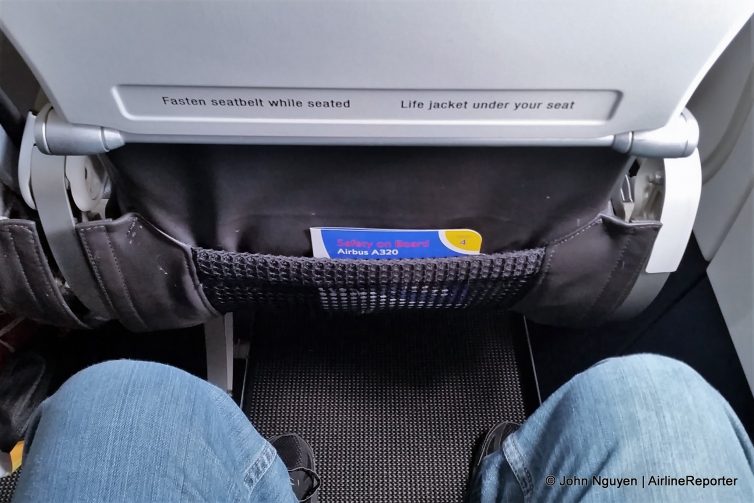
So little space. So much potential!
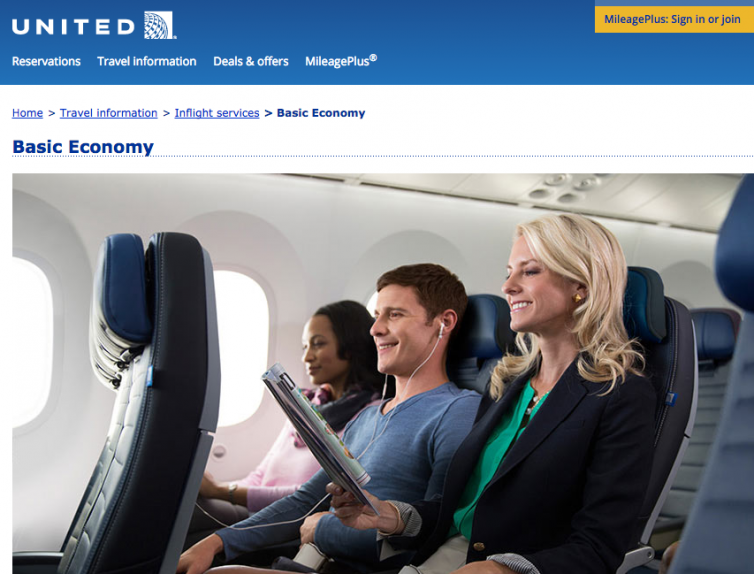
Will you be smiling that much when you fly Basic Economy? Photo: United Airlines
Even though the vast majority of my flying is in economy, it’s sometimes hard for me to know exactly what economy class is anymore. In the good old days, it reliably meant a seat with enough legroom, a drink, a snack, and my fair share of space in the cargo hold. But under pressure from ultra-low-cost carriers, U.S. legacy airlines have chipped away at what they offer travelers seated aft of the wing.
That trend took a major jump forward — or, depending on your perspective, backwards — with the introduction of new no-frills “Basic Economy’ fares that do the bare minimum to get you from Point A to Point B. Delta announced the rollout of its Basic Economy in select markets in late 2014, and has expanded it to other routes since then. United unveiled its own basic product late last year. Earlier this week, American shared that its own Basic Economy fares will be going on sale in February, starting with ten markets.
Is this new category of barebones fares good news for price-sensitive flyers? Or is it a new circle of hell in the sky? Read on for more on Basic Economy and what it means for you.

Air India’s Dreamliner livery – Photo: Manu Venkat | AirlineReporter
Let’s start with the bare facts: India’s flag carrier Air India doesn’t have a great reputation. Whenever I’ve asked people about their experience on the airline, they cite inexplicable delays, poorly maintained aircraft, a non-negligible risk of food poisoning, or rude staff. Or, sometimes, all of the above. As a friend of mine put it, ’œIf my only choice for a flight was Air India, I would just skip the trip and stay at home.’
As an American of Indian descent, I’ve always been a bit disappointed that my ancestral homeland’s flag carrier apparently doesn’t seem to have its act together. As someone who has never flown with the “maharaja,” part of me also wondered whether the airline is actually better than the reputation suggests. I decided to find out for myself.






